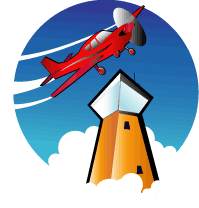Airport Watch At Center Of Industry-Proposed Security
Guidelines
AOPA's Airport Watch
program is the backbone of new general aviation security guidelines
to the TSA on Monday. The guidelines are the work of a special
committee, made up of AOPA and representatives from virtually every
facet of the aviation industry. Most of the recommendations reflect
positions AOPA has held since the September 11 terrorist
attacks.
"General aviation was not used in the September 11 attacks and
in fact has never been shown to be a terrorist threat," said, AOPA
Senior Vice President of Government and Technical Affairs Andy
Cebula. "In fact, the head of the TSA recently told Congress that
the threat from GA had been overstated.
"But because GA continues to receive undue attention from
security officials, we felt it was vital that our members be
represented on the panel.
"The most basic premise of the guidelines is that one size does
not fit all," he continued. "Local airport officials and pilot
communities have the best perspective on the security needs at
their airports."
The guidelines drawn up by the GA Airports Security Working
Group of the Aviation Security Advisory Committee are designed to
be useful to everything from a back-country airstrip to a bustling
GA reliever like Teterboro in New Jersey or Montgomery Field in San
Diego. At the heart of the guidelines is AOPA's Airport Watch.
"Establish an Airport Watch Program," the report says. "Utilize
the AOPA Airport Watch Program and/or develop a similar watch
program."
The report submitted on Monday notes that the government has
already implemented a number of security measures originally
proposed by industry, including:
- Screening of pilot databases;
- Requiring pilots to carry a government-issued photo ID as well
as pilot certificate;
- Developing and issuing new, hard-to-counterfeit pilot
certificates.
The government has also issued restrictions for foreign pilots
and foreign pilot training and, working with charter and business
aircraft operators, developed security programs for those types of
operations.
On its own, industry has taken a number of steps to enhance
security, including:
-
 AOPA — developed Airport Watch
and worked in conjunction with TSA to provide a nationwide
toll-free hotline for reporting suspicious activity, and Real-Time
Flight Planner, which helps pilots avoid restricted airspace;
AOPA — developed Airport Watch
and worked in conjunction with TSA to provide a nationwide
toll-free hotline for reporting suspicious activity, and Real-Time
Flight Planner, which helps pilots avoid restricted airspace;
- American Association of Airport Executives — developed a
set of airport security recommendations;
- Experimental Aircraft Association — using Airport Watch
materials, educated members in its nearly 1,000 chapters to enhance
security through increased vigilance;
- General Aviation Manufacturers Association — working with
the U.S. Dept. of Treasury, is helping identify suspicious customer
activity or transactions;
- National Agricultural Aircraft Association — developed
educational security materials for its members specifically related
to aerial application;
- National Air Transportation Association — through its
Business Aviation Security Task Force, issued security
recommendations for all aviation businesses to follow;
- National Association of Flight Instructors — developed a
series of security recommendations and best practices for flight
schools and flight instructors;
- National Association of State Aviation Officials —
drafted its own recommendations regarding general aviation
security;
- National Business Aviation Association — developed, and
working with TSA, implemented a "proof of concept" security
protocol;
- United States Parachute Association — distributed
detailed security recommendations to all of its skydiving clubs and
centers across the country.
Including AOPA, the GA Working Group was made up of 10 GA
associations, representatives from several individual airports, the
FAA, and the TSA. The Aviation Security Advisory Committee, of
which the working group was part, includes representatives from GA,
the airlines, and the defense and intelligence communities.
 ANN's Daily Aero-Term (12.14.25): Local Airport Advisory (LAA)
ANN's Daily Aero-Term (12.14.25): Local Airport Advisory (LAA) Airborne 12.08.25: Samaritans Purse Hijack, FAA Med Relief, China Rocket Fail
Airborne 12.08.25: Samaritans Purse Hijack, FAA Med Relief, China Rocket Fail ANN's Daily Aero-Linx (12.15.25)
ANN's Daily Aero-Linx (12.15.25) Airborne 12.10.25: New Gulfstream, ATC Integrator, Outrageous FFZ User Fees
Airborne 12.10.25: New Gulfstream, ATC Integrator, Outrageous FFZ User Fees Airborne-NextGen 12.09.25: Amazon Crash, China Rocket Accident, UAV Black Hawk
Airborne-NextGen 12.09.25: Amazon Crash, China Rocket Accident, UAV Black Hawk



